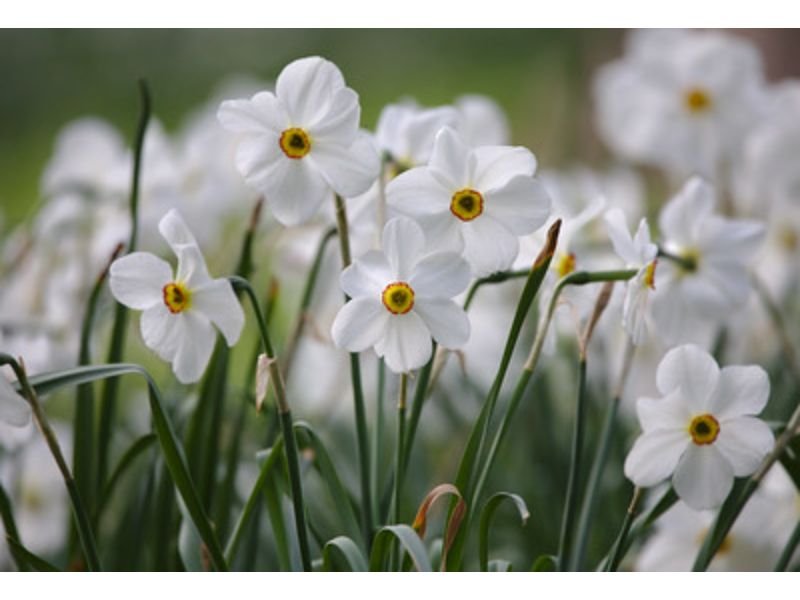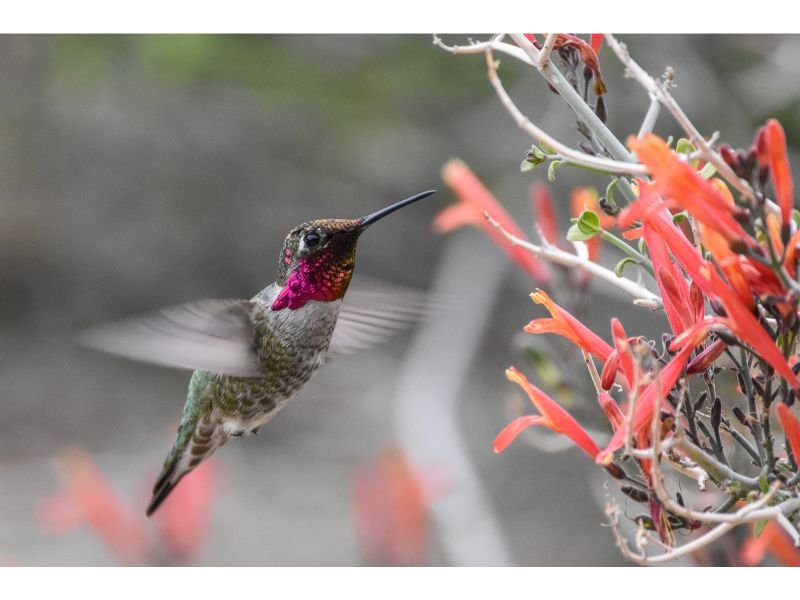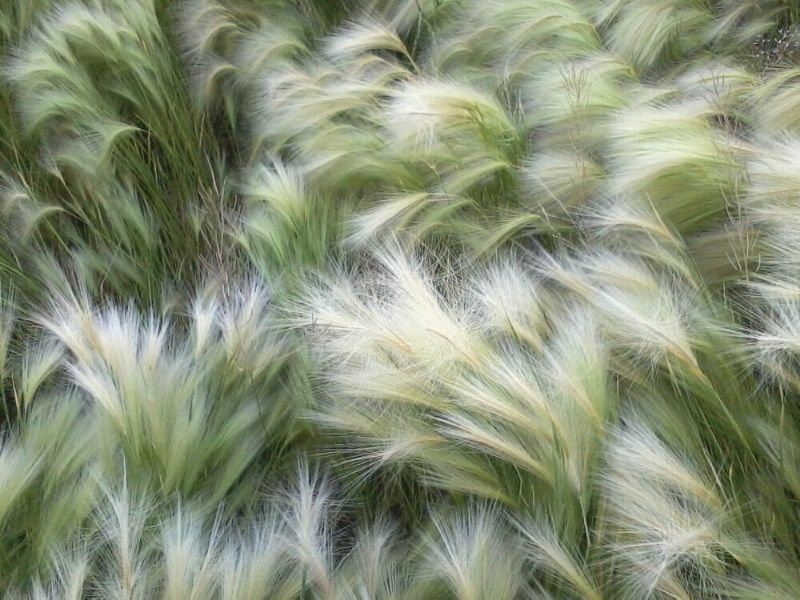The flaming scarlet and ruby hue of red coneflower cultivars never fail to impress. Whether you have a dull gardening space or are simply on the hunt for a burst of boldness and vivacity, these superb flowers are sure to spark a new life into your garden! Let’s get inspired and immerse ourselves in these red floral treasures.
Table of Contents
Blossoming in Scarlet: Outstanding Red Echinacea Cultivars for Plant Enthusiasts
Tomato Soup (Echinacea ‘Tomato Soup’)

Growing Zones: 3 to 8
Light Needs: Bright, direct
Soil: Permeable, moderately moist
Height: 2 to 3 feet (60 to 90 centimeters)
Who would have expected that a delicious bowl of soup would be the next inspiration for a plant? As the name suggests, this red coneflower variety is named after its striking red-orange petals, which resemble the sweet and savory tomato soup. They are not only visually appealing but also help attract butterflies, bees, and even songbirds–which can bring a lot of benefits to your garden!
Hot Papaya (Echinacea purpurea ‘Hot Papaya’)

Growing Zones: 4 to 9
Light Needs: Filtered shade to direct sun
Soil: Fast-draining, humus-rich
Height: 2.5 to 3 feet (76 to 90 centimeters)
Thanks to its eye-catching floral structure, consisting of pom-pom-like and droopy, single-layered petals, it must be difficult to not turn your attention to this red echinacea cultivar. Hot papaya bursts bright crimson-red blooms that sometimes, depending on the light may appear slightly reddish-orange. This plant is generally hassle-free, however, it’s still susceptible to various pests. and diseases including powdery mildew and leaf spot.
Firebird (Echinacea ‘Firebird’)
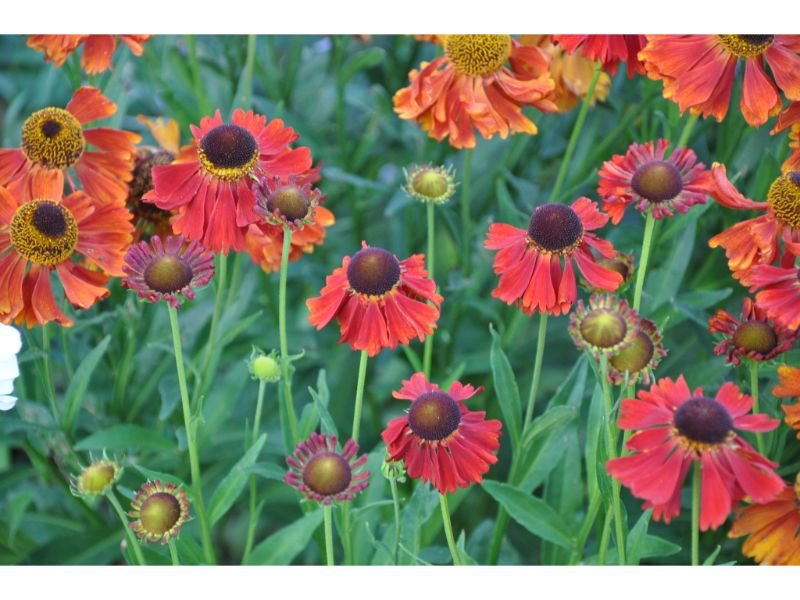
Growing Zones: 5 to 9
Light Needs: Bright, direct
Soil: Porous, sandy, loamy, or clay
Height: 2.5 feet (76 centimeters)
Firebird echinacea stuns with dark mahogany-orange cones and droopy crimson-colored petals that resemble a mini umbrella. This perennial red coneflower is relatively drought-tolerant once established and is valued the most for its attractive coloration and blooms. Like most coneflower cultivars, a firebird is usually a winter-hardy plant but it may struggle in extreme cold temperatures.
Read Also:
- The Best Indoor Plant Grow Lights for Thriving Houseplants
- Gardening Books: Essential Reads for Green Thumbs
- DIY Garden Projects: Creative Planting Ideas
- The Ultimate Guide to Organic Fertilizers for Healthy Plant Growth
- Top 10 Essential Gardening Tools Every Plant Lover Should Have
Sombrero Salsa Red (Echinacea ‘Sombrero Salsa Red’)

Growing Zones: 3 to 9
Light Needs: Bright to partial shade
Soil: Nutrient-rich, well-draining
Height: 1.6 to 3 feet (50 to 90 centimeters)
With dramatic daisy-like petals that bloom in a rich scarlet hue, it’s no wonder why sombrero salsa red has become one of the most well-known red coneflower varieties among plant lovers. But their salsa sauce-alike hue is not the only good thing about this neutral to-alkaline soil fan. Sombrero salsa red is also prized for its long blooming season and is also a must-have collection for cottage gardens.
Kismet Red (Echinacea ‘Kismet Red’)
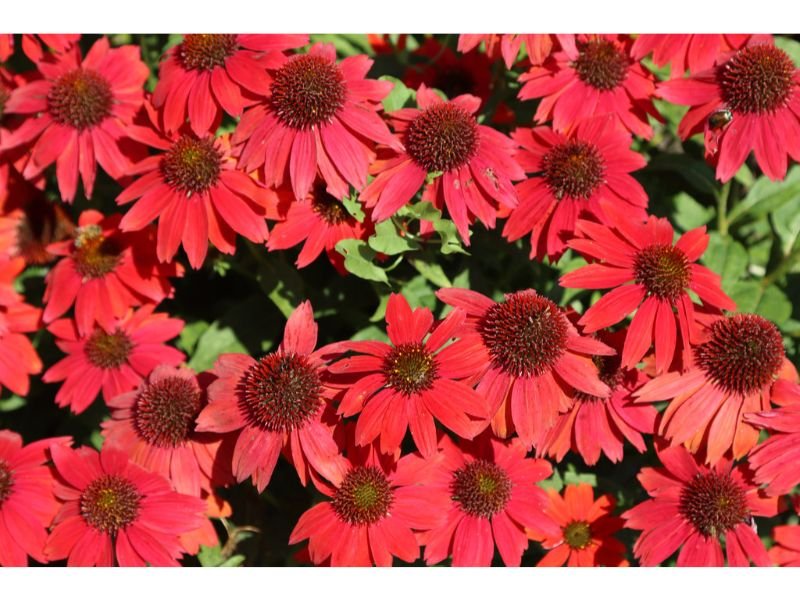
Growing Zones: 4 to 8
Light Needs: Bright, direct, or partial sun
Soil: Well-aerated
Height: 1.3 to 2 feet (40 to 60 centimeters)
From coral red to blood red with a hint of pink, kismet red echinacea ranges in a broad red hue that is here to serve everyone. This variety is a compact cultivar of red echinacea, making it suitable for containers and small gardening spaces. Kismet red needs at least a minimum of 6 hours of light each day to maintain its bright red hue. During the harsh cold season, it’s advisable to apply a layer of mulch at the base of the soil to protect the plant’s delicate roots and help restrain moisture.
Rare Red Coneflower Varieties
Secret Lust (Echinacea purpurea ‘Secret Lust’)

Growing Zones: 4 to 9
Light Needs: Semi-shade to direct sun
Soil: Fast-draining, porous
Height: 2 to 2.5 feet (60 to76 centimeters)
This late spring bloomer is remarkable for its sparse, orange-red droopy petals and double-layered prominent cones. Generally tolerant to drought, secret lust is also producing a sweet earthy fragrance, and along with its showy blooms, this plant is essential for gardeners who love making cut flowers. During early spring, you can apply a balanced, slow-release fertilizer to provide all the needed nutrients for healthy growth and blooming.
Double Scoop Cranberry (Echinacea ‘Balscanery’)
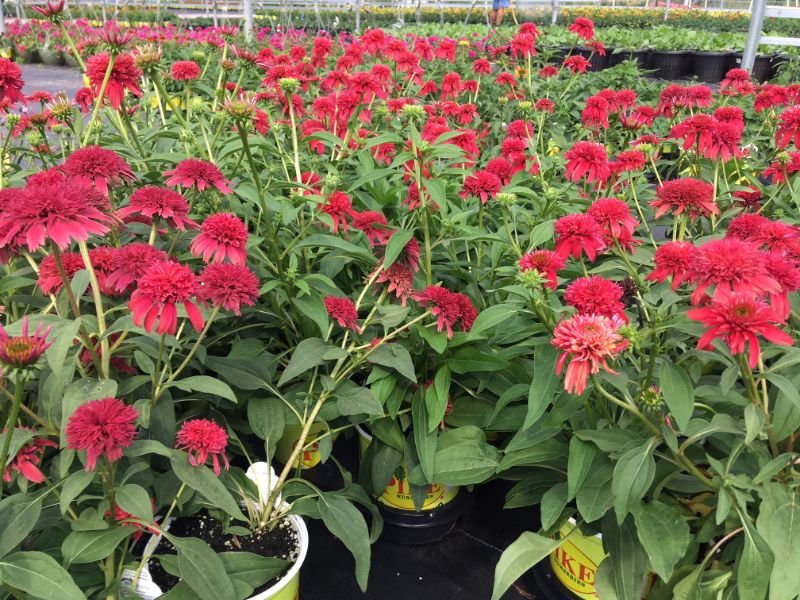
Growing Zones: 4 to 9
Light Needs: Bright, direct
Soil: Fast-draining, humus-rich
Height: 1.6 to 2 feet (50 to 60 centimeters)
Double scoop cranberry is a scarce and sought-after red coneflower cultivar that shares the same floral arrangement like secret lust, only differs in color. This plant prefers soil pH that ranges from slightly acidic to neutral. The rich cranberry red color of double-scoop cranberry coneflower adds a bold and vibrant element to any garden, creating a charming and eye-catching atmosphere that is also a feast for various pollinators.
Red Pearl (Echinacea ‘Red Pearl’)
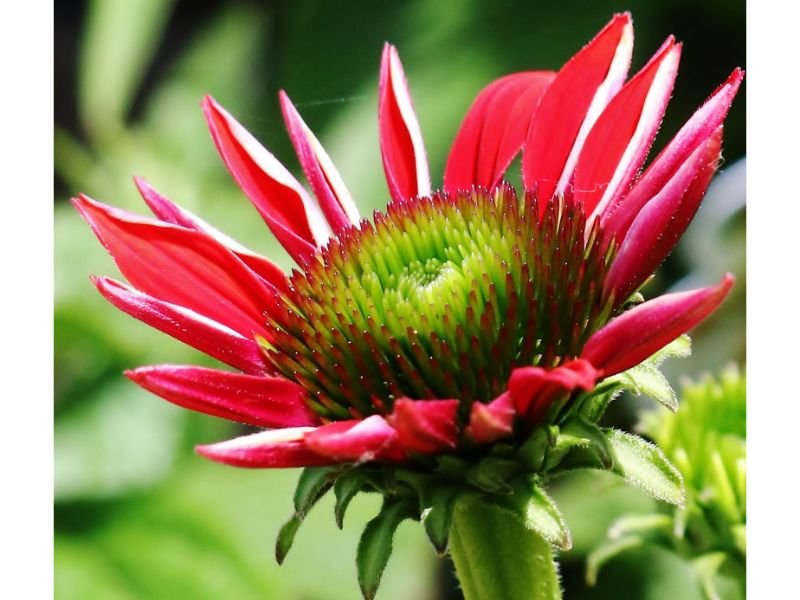
Growing Zones: 3 to 9
Light Needs: Bright, direct sun
Soil: Permeable, fertile
Height: 1.6 to 1.8 feet (50 to 54 centimeters)
Unlike the other red coneflower varieties, the red pearl has clusters of bright yellow-orange dots against its prominent, reddish-tan cones, making it easy to recognize. But in contrast to secret lust and double scoop cranberry, red pearl echinacea features only single-layer, daisy-like petals that range in light orange-red or magenta red. In terms of cultivation needs, the red pearl is not different from its coneflower counterparts and is generally easy to maintain.
Which Red Coneflower Varieties Attract the Most Pollinators?
It’s true that bright-colored blooms, including red echinacea cultivars, are such a pollinator-attractor. However, the ability of these gorgeous flowers to invite pollinators varies. Among all these red coneflower cultivars, the ones that truly steal the show are hot papaya, firebird, and secret lust–thanks to the pleasing aroma and the amount of nectar these flowers held.
Are There Any Specific Medicinal or Herbal Uses of Red Coneflower?
The red coneflower variety, the same as its purple cousins, is not just a pretty face–they’re also beneficial in the realm of medicine. This floral wonder has been used for centuries, mainly to boost the immune system and to treat colds and flu. This incredible low-maintenance plant also possesses anti-inflammatory properties that can be used to soothe the skin and throat.
Are All Red Coneflower Varieties Pests and Diseases Free?
The joy of growing coneflowers, regardless of what color it is, is that they’re mostly hassle-free and don’t require complex needs to thrive. Even so, unfortunately, no plant is 100% ever disease and pest free. Red coneflower varieties are still susceptible to problems such as root rot and yellowing or burning leaves, which can be the result of human error (e.g. over and underwatering). Pesky pests such as aphids, mealybugs, and spider mites are also still haunting the plant, but luckily, they’re all treatable!
Wrapping Up
Red cornflower cultivars are surely flowering plants that are worth thriving, whether you’re a novice or an expert in the world of gardening. From the classic daisy-like petals to the unusual, prominent pom-pom-like inflorescence with many shades of red to choose from, there’s always a type to mix and match with your gardening style!

New author in the hood. Loves gardening and flowers are my spirit animals (yes I know they are not animals but I insist). I will be covering most of the flowers’ topics here and occasionally random though as well.

